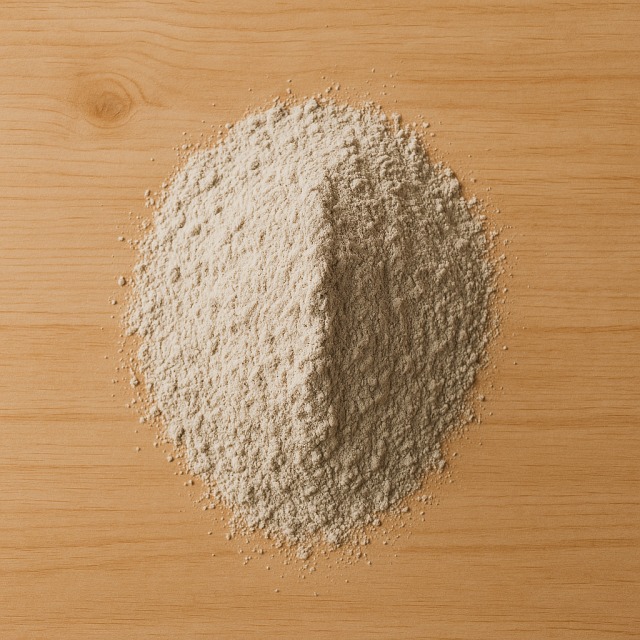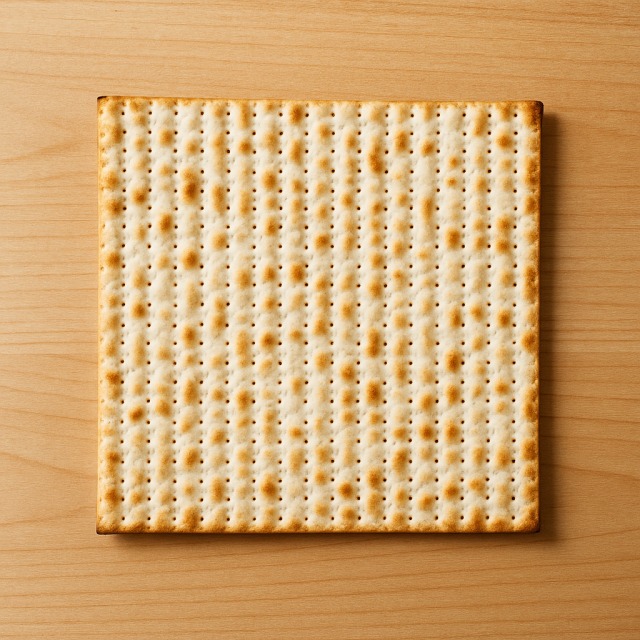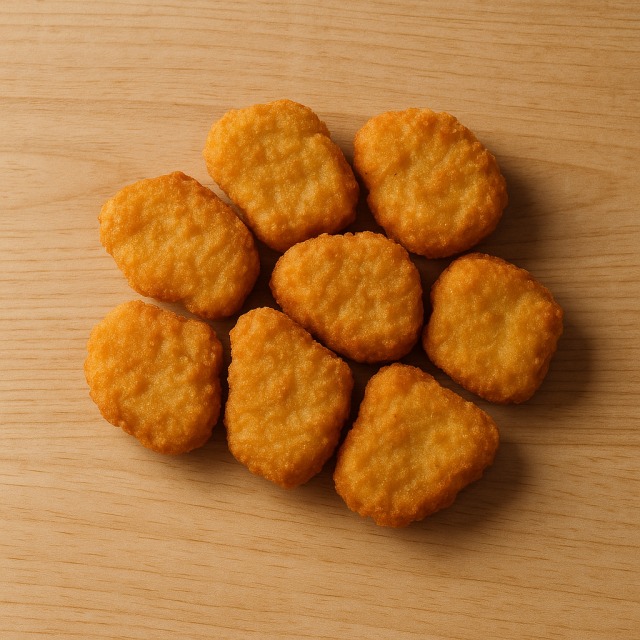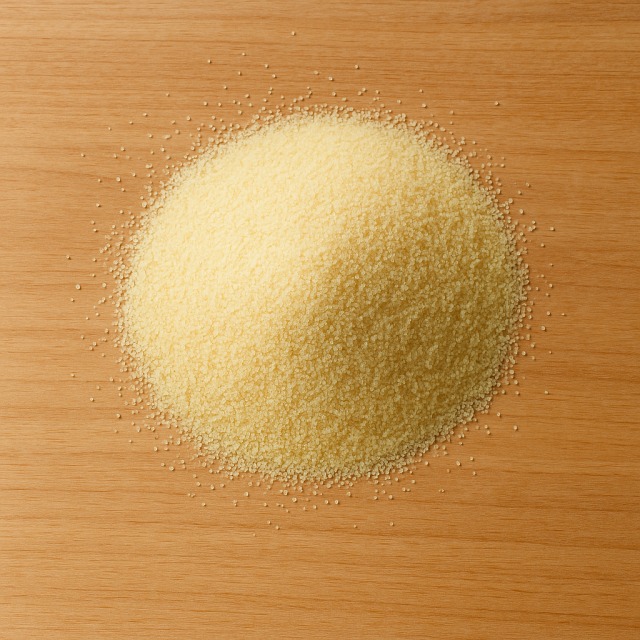Calorie Chart / Trimmings / White flour
How Many Calories Are in White flour?
Calculation of the nutritional value & Recommended Dietary Intake of white flour
For g and a calorie requirement of kcal
| Calories 363 kcal | Proteins 10 g | Lipids 1 g | Carbohydrates 79 g |
| 18% | 13% | 1% | 29% |
Health benefits of white flour
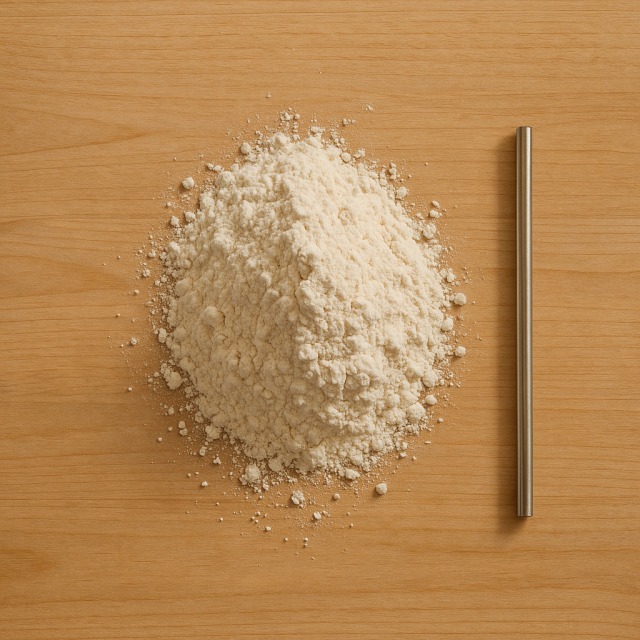
White flour - 100g
Calories 363 kcal
Proteins 10 g
Lipids 1 g
Carbohydrates 78.5 g
White flour is primarily a source of complex carbohydrates and supplies quick and sustained energy, which explains why most baked goods made with it contain noticeable calories. Although the refining process removes part of the bran and germ, standard white flour in Europe is usually enriched with B-group vitamins (thiamine B1, niacin B3, folic acid B9) and the mineral iron—nutrients involved in nervous system function, red blood cell production, and reduction of fatigue. Selenium and small amounts of zinc may also be present.
Because it provides about 363 kcal per 100 g, white flour is considered a high-calorie ingredient. Its very low fat content (≈1 g/100 g) makes the energy density come almost exclusively from starch. The 10 g of proteins per 100 g supply gluten-forming amino acids that give dough its elasticity, a key technological benefit for bread-making.
Historically, the ability to sift wheat finely enough to obtain "white" flour marked social status. In 19th-century Europe, roller milling industrialized this process and made low-ash, light-colored flour accessible to all. Today, soft wheat (T55 or T45 types in France) dominates pastry production, while harder varieties are preferred for pasta. Whether you bake a family loaf or whip up Sunday crêpes, understanding white flour's calories helps adjust portions and choose complementary nutrients.
Tips for incorporating white flour into a balanced diet
Because its calories come almost entirely from carbohydrates, combine white flour preparations with fiber-rich vegetables or lean proteins to moderate the glycemic impact of a meal. For example, pair homemade pizza made with classic white-flour pizza dough with a topping of grilled vegetable jardinière and a side salad.
If you enjoy breakfast pancakes, replace one-third of the white flour with wholemeal flour or oats and serve the stack with fresh fruit like banana slices instead of syrup to reduce added calories while boosting micronutrients. Likewise, a simple batch of crêpes can become balanced by filling them with sautéed spinach and cottage cheese.
Classic baguette or sandwich bread typically relies on white flour; accompany a slice with lean chicken breast and crunchy cucumber for a light yet satisfying lunch. And when baking cookies, cut the sugar by 20% and add chopped almond to bring healthy lipids and extra proteins without excessively increasing calories.
Frequently Asked Questions
- How many calories are in white flour?
- White flour contains 363 kcal per 100 g.
- Is white flour higher in calories than wholemeal flour?
- The calorie content of white flour and wholemeal flour is very similar (both around 340–360 kcal/100 g). The main difference is that wholemeal flour offers more fiber, vitamins, and minerals.
- Does white flour contain gluten?
- Yes. Wheat proteins (mainly gliadin and glutenin) form gluten when hydrated and kneaded. This network traps gas during fermentation, giving bread its airy crumb but posing an issue for people with celiac disease.
- How can I lower calories in a cake recipe using white flour?
- You can replace part of the flour with pureed fruit such as apple sauce, cut the fat by 25%, and reduce added sugar. These swaps decrease total calories without compromising moisture.
- Are the vitamins in enriched white flour enough to meet daily needs?
- Enrichment restores only a fraction of the nutrients lost during milling. Complement your diet with whole foods like broccoli, egg, or lentils to cover micronutrient requirements.
- Is white flour suitable for athletes?
- Thanks to its carbohydrate density, white flour provides rapid muscle glycogen replenishment. Athletes often enjoy post-workout pancakes topped with peanut butter and berries. However, for long-term health, alternating with whole grains improves fiber intake without greatly altering calories.
Similar foods
Information provided by Calorie Menu may contain inaccuracies or errors. It cannot, under any circumstances, substitute medical advice or medication.

